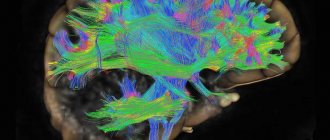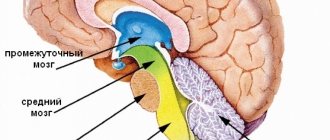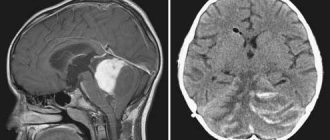What is leptospirosis?
Leptospirosis in humans is an infectious disease caused by microorganisms of the genus Leptospira. They can be found in all places except Antarctica. The widest distribution of these parasites is observed in tropical countries.
They have increased resistance to all adverse external factors. For example, the existence of these bacteria in water bodies is observed for a whole month. They are even more comfortable in moist soil; they can stay there for at least 9 months.
Causative agents of the disease
The causative agents of leptospirosis are bacteria from the Leptospira family with a convoluted shape and small curls. These microorganisms are big fans of a humid environment.
Thanks to multiple and labor-intensive studies, researchers were able to find out many interesting facts regarding Leptospira:
- Artificial conditions inhibit the development and growth of these microorganisms, which greatly complicates the rapid diagnosis of the disease. After approximately 7 days of their presence in the body, their detection is only possible.
- The causative agent of leptospirosis has one negative feature - their destruction is accompanied by endotoxin, which has a destructive effect on the cells of all body systems.
- Bacteria, entering the human body, settle in the blood vessels, attaching themselves inside them, causing incredible harm not only to the vessels, but also to the blood cells.
- Bacteria have very good endurance - they are not afraid of low temperatures, ultraviolet rays, acid and alkaline solutions. Almost all generally accepted disinfectants, which can be used to get rid of many harmful microorganisms, cannot cope with leptospira, so it is difficult to fight them.
Transmission routes
There are several routes of transmission of this common disease.
Nutritional . This route of transmission of leptospirosis is characterized by their entry into the body after ingestion of water from open bodies of water, as well as food products that, for some reason, have been exposed to the urine of infected animals.
Contact . This route of infection is possible through direct contact of the affected areas of the skin and mucous membrane with infected soil and water.
Who is at risk of contracting leptospirosis?
Not a single person in the world is immune from this disease.
But, there are some risk groups of people who are exposed to infection much more often than others:
- People are at high risk of leptospirosis after swimming in a body of standing water. It may contain urine and feces of infected animals. Under such conditions, it is very easy for bacteria to enter the human body not only through damaged skin, but also through the oral mucosa, nose and eyes. Infections with leptospirosis occur during seemingly harmless walking barefoot. If the soil becomes contaminated, infection is difficult to avoid.
- People whose professional field of activity is related to livestock farms, meat processing plants, and wetlands. This category also includes veterinarians and workers at homeless animal shelters. They can contract leptospirosis from infected dogs.
It is important to know that people are very susceptible to this disease. The presence of the smallest affected skin and the same amount of leptospira in the water can in most cases cause the disease.
Most often, adolescent children and adults are affected by this disease. This disease has seasonal outbreaks. In most cases they occur in summer and autumn.
PREVENTION
Measures to prevent leptospirosis should be based on identifying groups of people at increased risk of infection and knowledge of the epidemiological situation in the region. The purpose of control is to combat likely sources of infection.
Preventive measures include:
- Vaccination of agricultural animals and dogs.
- Rodent control, deratization of agricultural farms, urban facilities.
- Veterinary control of food storage and sale conditions.
- Routine vaccinations for workers in occupational risk groups.
- Use of protective clothing by workers at risk (employees of meat processing plants, slaughterhouses, milkmaids, shepherds).
- Monitoring the sanitary condition of water bodies. Regular inspections by the relevant services of drinking water intakes for the population and water recreation areas.
- Educational work among the population about the dangers of swimming in stagnant bodies of water.
Phases of the disease
Most often, infection can occur from human contact with water. Even with the slightest damage to the skin, Leptospira can be introduced into the body. Moreover, no external manifestations appear on the skin after this. All transformations occur in internal organs and blood vessels.
Leptospirosis develops in 5 stages:
- At the first stage, leptospires penetrate the human body and settle through the blood in the liver, spleen, and lungs. This process is not accompanied by any external manifestations and the person is not yet even aware of the unexpected guests who have settled in his body.
- The first clinical signs appear when a lot of Leptospira already appears in the bloodstream. There are so many of them that they spread very quickly throughout the entire circulatory system and internal organs of a person.
- The third week of parasitism in the body by Leptospira is characterized by the height of the disease and the presence of obvious signs. Small vessels are especially affected.
- During the fourth stage, there is a gradual subsidence of obvious symptoms of the disease.
- In the fifth phase, recovery begins, which is accompanied by the formation of sterile immunity and the last period of disease development. There are cases of complications and relapses of the disease.
The disease does not always have serious consequences, but deaths have been observed during epidemics.
The peculiarity of this disease is that immediately after infection and during the incubation period no visible manifestations are observed, although changes do take place at an invisible level. This period lasts 3-30 days. All this time, the already infected person feels great and does not even suspect the presence of bacteria in his body.
Main symptoms
The incubation period ranges from 3 to 30 days. As a rule, it does not exceed two weeks. The range of clinical manifestations is very wide. Weil's disease can occur in an icteric or anicteric form, with a pronounced clinical picture or an erased one. It is characterized by a polymorphism of symptoms observed in other ailments. Therefore, it requires differential diagnosis.
During the course of the disease, it is customary to distinguish several stages: initial, peak period, convalescence. Each of them has a specific clinical picture and features.
Signs of leptospirosis in humans
There is no specific clinical picture of this disease. Leptospirosis can masquerade as many other illnesses. Anamnesis is also important. In frequent cases, leptospirosis overtook those people who came into contact with water in a stagnant pond or were in nature.
The symptoms of leptospirosis include the following:
CLASSIFICATION
There is no generally accepted classification of leptospirosis. Leptospirosis can be roughly divided according to the severity of the course and the presence of the symptom of jaundice.
According to severity:
- Lung. Limited to mild fever.
- Medium-heavy. High temperature and extensive clinic.
- Heavy. Intense fever with severe jaundice. Thrombohemorrhagic syndrome, meningitis develops, and renal failure develops.
- Erased form. It is expressed by short-term fever with the absence of a typical clinical picture.
According to the presence of jaundice:
- Jaundice form (Vasiliev-Weil disease).
- Anicteric form (water fever).
How does leptospirosis manifest itself during the peak of the disease?
After the second week after the appearance of primary signs of the disease, the second stage begins, during which all organs and systems are observed to be involved in the infection process. The liver, kidneys and central nervous system are primarily affected.
The second period of development of the disease is characterized by the following symptoms:
- General symptoms gradually decrease, but symptoms of damage to internal organs become apparent.
- Inflammatory processes in the liver in severe leptospirosis are observed at the end of the first phase. The beginning of the second stage is characterized by a change in the color of the patient’s skin. They become yellowish in color. In addition, the skin becomes covered with a hemorrhagic rash accompanied by itching.
- Serious changes occur in the functioning of the kidneys. Very little or no urine is produced. Her analysis indicates the presence of protein, a large number of leukocytes and blood cells. If urine is not excreted within 5 days, in most cases the patient dies.
- The cardiovascular system also undergoes serious changes, causing a decrease in blood pressure. An examination of the heart shows serious changes in it, and the pulse is threadlike and arrhythmic.
- Frequent hemorrhages are observed in the skin and internal organs.
Initial or febrile stage
The disease usually begins acutely with an increase in temperature to 39-40 degrees. The person suffers from chills and weakness, nausea and vomiting. Fever usually persists for a week and is persistent or recurrent. Another sign of the disease at the initial stage is muscle pain. They intensify upon palpation.
The appearance of the patient is also striking. The skin on the face and upper body becomes red and puffy. Herpetic rashes are possible in the area of the lips and wings of the nose. The tongue is always dry, covered with a gray or brown coating.
On days 3-6, a pinpoint rash appears all over the body. Leptospira secretes endotoxin, which destroys red blood cells. This leads to multiple hemorrhages and nosebleeds.
There is also an increase in the size of the liver and spleen. Signs of kidney damage may occur: pain in the lower back, change in urine color to reddish.
Leptospira bacteria sometimes cross the blood-brain barrier to reach the brain. In 20% of cases, patients develop meningeal syndrome. It is characterized by severe headaches that cannot be relieved with analgesics, and vomiting.
What happens after the peak of leptospirosis?
Gradually all symptoms subside. This indicates that the disease is receding and the organs are restoring their primary functions. It should be noted that this does not happen to every person infected with leptospirosis. More than a third of patients suffer from relapse of the disease and the return of its symptoms, although not so pronounced.
The average duration of the disease is about 28 days. The accompanying relapses delay recovery for 3 months.
It is worth noting that there are 2 forms of leptospirosis - icteric and anicteric. The first is often confused with hepatitis. Leptospira affects each organ differently. This is especially evident during a severe course of the disease, which is called Weil's disease.
Literally 3 days are enough for symptoms of infection to develop after mild symptoms have passed. They differ depending on which organ is damaged by Leptospira - the brain, lungs, kidneys, liver or heart. It is extremely rare, but symptoms that are inherent in the defeat of all these three groups of organs do occur.
Damage to the liver, kidneys and heart is characterized by the following symptoms:
Neglect of the disease can be fraught with liver or kidney dysfunction, which in most cases ends in death.
When Leptospira affects the brain, 2 serious diseases occur:
These two diseases have similar symptoms:
All of these signs indicate a serious problem. If you do not treat the disease in the same way as in the previous case, everything can end in disaster.
When Leptospira infects the human lungs, the most complex and sometimes irreversible consequences arise. The bacteria damage the lung tissue, resulting in internal bleeding and ultimately martyrdom.
The symptoms are as follows:
Prognosis and complications
Leptospirosis has a favorable prognosis. Deaths are mainly caused by inadequate or untimely medical care, weakened state of the body against the background of concomitant pathologies. Mortality does not exceed 1-2%.
The most common complication is acute renal failure. In some cases, DIC syndrome, bleeding in the gastrointestinal tract, eye diseases - uveitis, iridocyclitis, cerebrovascular accident, inflammation of the heart muscle are manifested.
As preventive measures, it is recommended to wash your hands before eating, eat only well-fried meat, avoid drinking raw water, carry out anthelmintic therapy for pets, and destroy pests in the house (rats, mice).
Acute kidney damage is the most common complication of leptospirosis. Also an important cause of mortality in developing countries is pulmonary involvement followed by profuse bleeding (severe hemorrhagic pulmonary syndrome).
Liver dysfunction is usually not severe and is easily reversible. Various forms of thrombocytopenia are also diagnosed with leptospirosis. The main consequences of leptospirosis in humans:
- spontaneous abortion in pregnant women;
- acute kidney injury;
- thrombocytopenia;
- liver failure;
- DIC syndrome;
- gastrointestinal bleeding;
- pulmonary hemorrhage;
- rhabdomyolysis;
- ocular disorders such as chronic or recurrent uveitis, iridocyclitis, chorioretinitis;
- adult respiratory distress syndrome;
- hypotension; vascular collapse can be sudden and fatal in the absence of prompt supportive treatment;
- acute cerebrovascular accident, subarachnoid hemorrhage, cerebral arteritis;
- Kawasaki disease;
- erythema nodosum;
- myocarditis;
- rarely heart failure, but with nonspecific changes on the ECG.
The most common complication of the disease is renal failure. In severe cases, it can develop in the first week, providing a high mortality rate of more than 60%. Other complications may include liver failure, hemorrhages in the tissue of the lungs, adrenal glands, muscles, and internal bleeding.
Among other things, complications from the nervous system are possible: meningitis, meningoencephalitis. Complications from the organs of vision: iritis and iridocyclitis. Leptospirosis can contribute to the addition of a secondary bacterial infection: secondary pneumonia, abscesses, bedsores.
Typically, leptospirosis has a favorable prognosis; deaths are mainly associated with insufficient or untimely medical care and a weakened state of the body. Currently, the mortality rate from leptospirosis does not exceed 1-2%. An increase in this indicator to 15-20% is possible during periods of mass epidemics.
Prevention of leptospirosis involves, first of all, control over the incidence of disease in farm animals, as well as limiting the reproduction of rodents (deratization of urban facilities, rural farms). Sanitary and hygienic measures include monitoring the condition of water sources (both places of water intake for the needs of the population and public beaches), agricultural lands.
Development of ITS, disseminated intravascular coagulation syndrome, hemorrhages and intracavitary hemorrhages, meningitis, encephalitis, polyneuritis, the occurrence of secondary bacterial complications, etc.
In some cases, acute renal failure can develop in a latent form without hemorrhagic syndrome and jaundice, ending in death after 3-5 days.
In addition, in the acute phase, cerebral edema, pneumonia and myocarditis, paralysis or paresis may be observed, as well as dangerous eye complications - iridocyclitis, iritis, uveitis, which occur a month after the pathogen enters the body.
The body receives a large dose of toxins. The functioning of the liver, kidneys and nervous system is also disrupted. Severe forms of the disease can cause jaundice, hemorrhagic syndrome, meningitis and renal failure in patients. Therefore, in order not to become an object of Leptospira reproduction, you need to know the nature of the disease.
Mild leptospirosis responds very well to antibiotic treatment, and most people will make a full recovery within a week.
Most people with severe leptospirosis will require hospitalization so their body functions can be maintained while the underlying infection is treated with antibiotic injections.
Diagnosis of leptospirosis
The problem with leptospirosis is that it is quite difficult to diagnose it during the incubation period in humans. Symptoms may be completely absent or may be disguised as symptoms of other infectious diseases. Leptospirosis is often initially confused with influenza or acute respiratory infections.
Leptospires are detected in blood and urine samples. It is enough to do a bacteriological study of this material.
To determine the pulmonary form of the disease, a chest x-ray is required.
Treatment
Leptospirosis is a serious infectious disease, so it must be treated within the walls of an infectious diseases hospital. Self-treatment can only worsen the situation.
It is advisable to start treatment from the 4th day of infection, then the consequences of the disease can be avoided. A mild form of the disease is treated with a 5-6-day course of penicillin, tetracycline or erythromycin. The course of treatment should be complete, despite the fact that no symptoms of the disease are observed. Otherwise, relapse and serious complications are possible.
Pain is relieved with ibuprofen or paracetamol.
A severe form of the disease should be accompanied by treatment of the patient in a hospital setting and under the strict supervision of an infectious disease specialist. In this case, antibiotics are administered intravenously.
Serious kidney damage sometimes requires emergency assistance to the body - hemodialysis.
The duration of treatment depends entirely on the general condition of the patient’s body, his response to treatment, as well as the extent of the affected internal organs. An important point in the treatment of leptospirosis is drinking plenty of fluids and bed rest.










